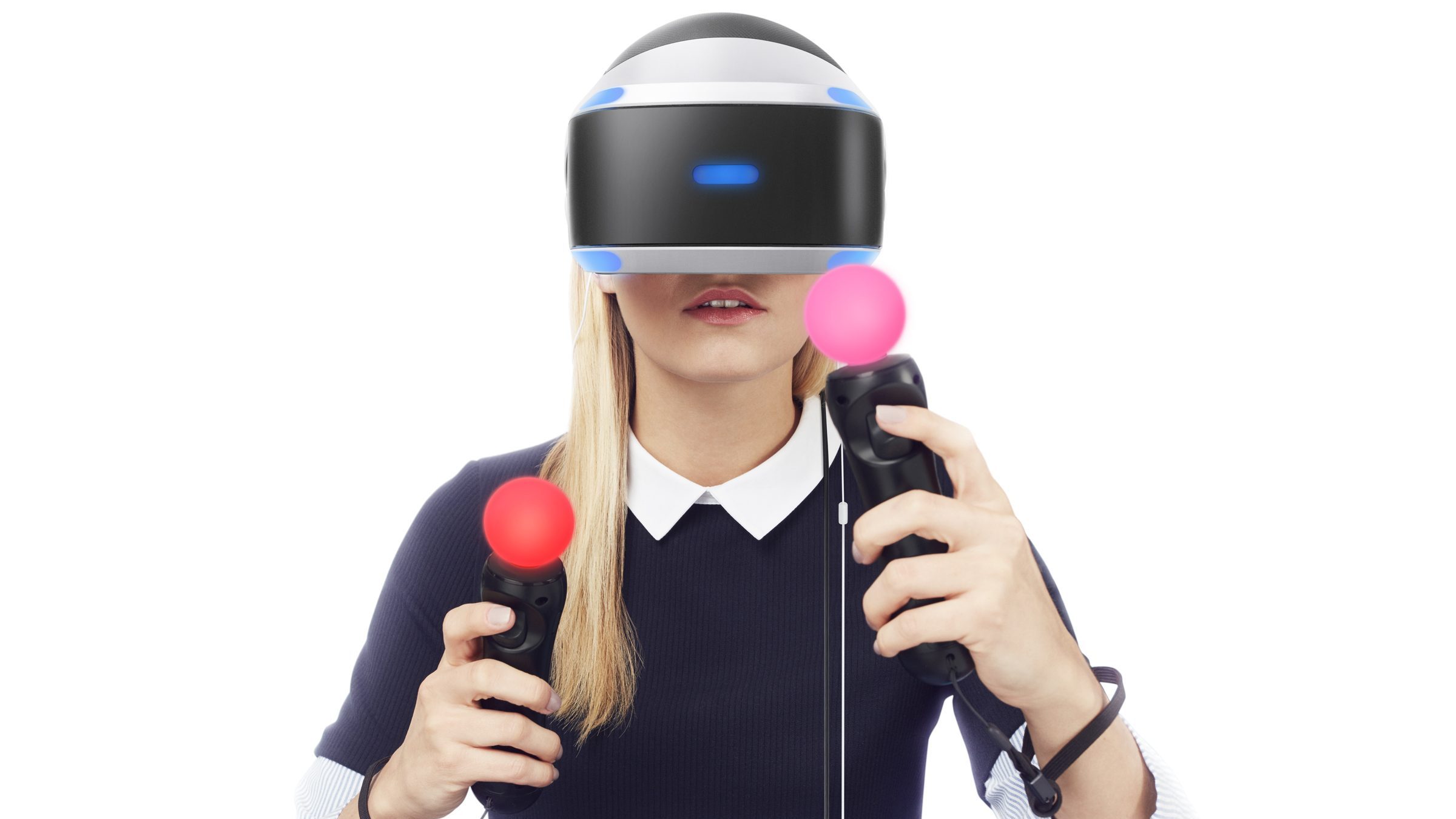PlayStation VR
PlayStation VR uses cameras too, but unlike the Rift the PSVR’s tracking operates in the visual light spectrum.
The PlayStation 4 camera bar contains two spaced out cameras. The camera unit is connected to the PlayStation, which uses the image data to track the blue strips of light on the headset and the orbs of light on the controllers.

Above: Sony’s PSVR with Move controllers.
This allowed Sony to leverage the existing PlayStation Move controllers from back in 2010.
PSVR Tracking Advantages:
- Low cost to integrate
- Leverages existing PS Move controllers
PSVR Tracking Disadvantages:
- Low quality tracking
- No room scale support
SteamVR ‘Lighthouse’ (HTC Vive)
Valve’s SteamVR “Lighthouse” system is the most unique currently on the market. Unlike all the other systems it does not use cameras at all, and the PC does not process any data. Lighthouse was designed from the start to enable room scale positional tracking without having to wire sensors back to the user’s PC.
Base stations (“Lighthouses”) are placed at opposite top corners of the room. They do not communicate with the PC and they are not sensors. They emit wide angle two dimensional IR laser beams across the entire room. This is done 1 axis at a time, so left-right then top-bottom, repeatedly. Before each sweep they emit a powerful IR flash of light.
Each tracked device contains an array of IR photodiodes connected to a chip. This chip measures the time between the IR flash and being hit by the laser sweep for each axis. From this it can determine its position in the room.
The unique value of Lighthouse is that it is a relatively simple design in theory. No complex computer vision algorithms or camera readings are involved, just the timing between laser sweeps.
Lighthouse Advantages:
- No PC connection to base stations required (just power),
- High quality tracking,
- Wide tracking volume.
Lighthouse Disadvantages:
- Relatively expensive to produce / integrate,
- Usually requires mounting base stations on walls (otherwise the motors jitter),
- Reflective surfaces in room cause glitches.
SLAM/Inside-Out
After the release of the Oculus Rift and HTC Vive, a lot of VR companies began to realize that the requirement to mount sensors or base stations in the room was putting many potential buyers off.
Many newer and upcoming headsets use cameras built into the headsets themselves which perform “inside-out” tracking using computer vision algorithms. The specific type of algorithm used is called Simultaneous Location And Mapping (SLAM).
SLAM algorithms work by noticing unique static features in the room. By comparing the rotation and acceleration from the accelerometer & gyroscope to how these features appear to move, the position of the headset can be determined.
Several companies have released or are planning to release headsets using SLAM:
- Microsoft: Every Windows MR headset
- Google: Lenovo Mirage Solo
- HTC: Vive Focus
- Facebook: Oculus Quest and Oculus Rift S
Google calls their tracking algorithm ‘WorldSense’ and Facebook calls theirs ‘Oculus Insight’.
To track controllers, these systems operate in a similar way to Constellation — either with visible or infrared light. The cameras on the headset track LEDs under the plastic on the controllers.
Advantages:
- No external hardware required,
- Very low cost,
- Trivial setup,
- If you could see your hands in real life, the headset can track the controllers.
Disadvantages:
- Doesn’t work in the dark,
- Can’t track controller movement behind head or back accurately,
- Can’t track controller movement when arm is between headset and controller.
This story originally appeared on Uploadvr.com. Copyright 2019
